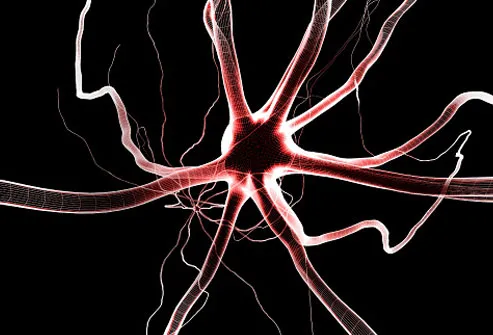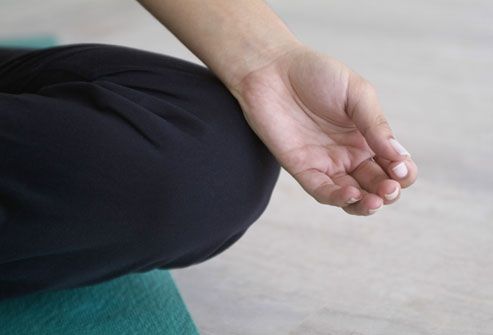 02/22
02/22
What Is Fibromyalgia?
Fibromyalgia is a lifelong condition that affects about 5 million Americans. People with it have sore, stiff muscles, but nothing odd shows up on X-rays or most lab tests. Doctors diagnose it based on your symptoms and an exam. While fibromyalgia doesn't damage joints or organs, the constant aches and fatigue can really impact daily life.
 03/22
03/22
Symptoms
The hallmark of fibromyalgia is muscle pain throughout your body. Typically, you'll also have:
- Fatigue
- Sleep problems
- Anxiety or depression
- Joint pain and numbness or tingling
 04/22
04/22
Tender Points
One of the unique things about fibromyalgia is specific locations on the body that, when pressed, hurt. People without fibro would only feel pressure. This illustration shows 18 common tender points.
 05/22
05/22
The Pain Is Real
Because traditionally no lab tests or X-rays could confirm a diagnosis of fibromyalgia, people may have been led to believe this feeling was "all in their heads." But the medical community now accepts that the intense pain of fibromyalgia is real. Research suggests it's caused by a glitch in the way the body perceives pain.
 06/22
06/22
Who's at Risk?
Women between 25 and 60 have the highest chances of developing fibromyalgia. Doctors aren't sure why, but women are 10 times more likely to have it than men. Some researchers believe genetics may play a role, but we don't know which specific genes it could be
 07/22
07/22
Fatigue
It's the next most common symptom. This isn't the normal tiredness that follows a busy day, but a lingering feeling of exhaustion. People with fibromyalgia may feel tired first thing in the morning, even after spending hours in bed. The fatigue may be worse on some days than others, and it can get in the way of work, activities and exercise, and household chores.
08/22
Causes
Research has yet to pinpoint a clear culprit, although there are many theories. Some doctors believe hormonal or chemical imbalances disrupt the way nerves signal pain. Others suggest a traumatic event or chronic stress may raise your odds. Most experts agree that fibromyalgia probably results from a combination of things, rather than just one.
09/22
What Happens to Daily Life
Pain and fatigue that don't let up can make you cranky, anxious, and depressed. You may have trouble staying on task at work, taking care of your kids, or keeping up with cleaning, for example. Exercise or hobbies such as gardening may seem daunting. Because you're exhausted and in a bad mood, you may not want to visit with friends. Fortunately, treatments can help relieve symptoms so you can do what you enjoy.
10/22
Diagnosis
When you see your doctor, describe your pain in detail, including where it is and how often it happens. Also tell your doctor about other symptoms, such as fatigue, sleep problems, or anxiety. She may do a blood test for fibromyalgia as well as tests to rule out other conditions.
11/22
Getting Help
It used to be that rheumatologists -- arthritis doctors -- were the only ones who treated fibro. Today, the condition has captured the attention of a wide range of health care providers. Many people are treated by their primary care doctors. Check with local support groups and hospitals for a list of fibromyalgia experts in your area.
12/22
Triggers
An important first step to feeling better is figuring out what makes your symptoms worse. Common triggers include:
- Cold or humid weather
- Too much or too little physical activity
- Stress
- Poor sleep
13/22
Sleep
Many people with fibromyalgia have trouble falling asleep or wake up often during the night. Studies suggest some of them stay in a shallow state of sleep and never get restful, deep sleep. This means your body doesn't get the chance to repair itself, which can lead to a cycle: Poor sleep may make pain seem worse, and pain prevents good sleep.
14/22
Depression
Nearly a third of people with fibromyalgia also have major depression when they're diagnosed. You may have a hard time concentrating, feel hopeless, and have little interest in your favorite activities. Some researchers believe depression may be a result of the chronic pain and fatigue. Others suggest that something off in the brain chemistry may lead to both depression and an unusual sensitivity to pain.
15/22
Medication
The goal of treatment is to minimize pain, trouble sleeping, and mood issues. To help ease your symptoms, your doctor may recommend medicines from familiar over-the-counter pain relievers to prescription medications like amitriptyline. Prescription drugs that specifically treat fibromyalgia include duloxetine (Cymbalta), milnacipran (Savella), and pregabalin (Lyrica).
16/22
Exercise
Physical activity can lessen pain and improve fitness. Exercising just three times a week can relieve fatigue and depression. But don't overdo it. Walking, stretching, and water aerobics are good things to start with.
17/22
Diet
Some experts say what you eat may play a role in fibromyalgia -- just not the same role for everyone. Certain foods and ingredients -- such as aspartame, MSG, caffeine, and tomatoes -- seem to worsen symptoms for some people. To find out if something in your diet is a trigger for you, try avoiding one food at a time and keeping a diary of how you feel.
18/22
Massage
Rubbing, kneading, and stroking all seem to help relieve pain. Practitioners say that moderate pressure is key, and a 20-minute session may be long enough to get results.
19/22
Acupuncture
This traditional Chinese practice uses thin needles inserted at key points on the body to restore the flow of energy. Medically speaking, the process may affect your nerves, muscles, and connective tissue. (Acupressure stimulates the same points with pressure instead, if you want to avoid needles.) Study results are mixed, but some people say it eases their symptoms.
20/22
Fibro Fog
Have trouble concentrating? That's called "fibro fog," and you're not alone. Treatment for pain and insomnia may help, but there are also other steps you can take to improve your focus. Write notes about things you need to remember, keep your mind active by reading or doing puzzles, and break tasks up into small, manageable steps.
21/22
Stress
It's one of the most common triggers of flare-ups. While you can't get rid of all stress from your life, you can limit it. Pay attention to which situations make you anxious or upset -- at home and at work -- and look for ways to make them less trying. Check out yoga, meditation, and other relaxation techniques. And allow yourself to say "no" when something isn't critical, must-do, right now.
22/22
Does It Get Better?
Many people with fibromyalgia find that their symptoms and quality of their life improve a lot when they find an effective treatment and adjust their behavior and habits. While the condition isn't something you can cure, it doesn't damage your joints, muscles, or internal organs.
 02/22
02/22 03/22
03/22 04/22
04/22 05/22
05/22 06/22
06/22















Comments
Post a Comment